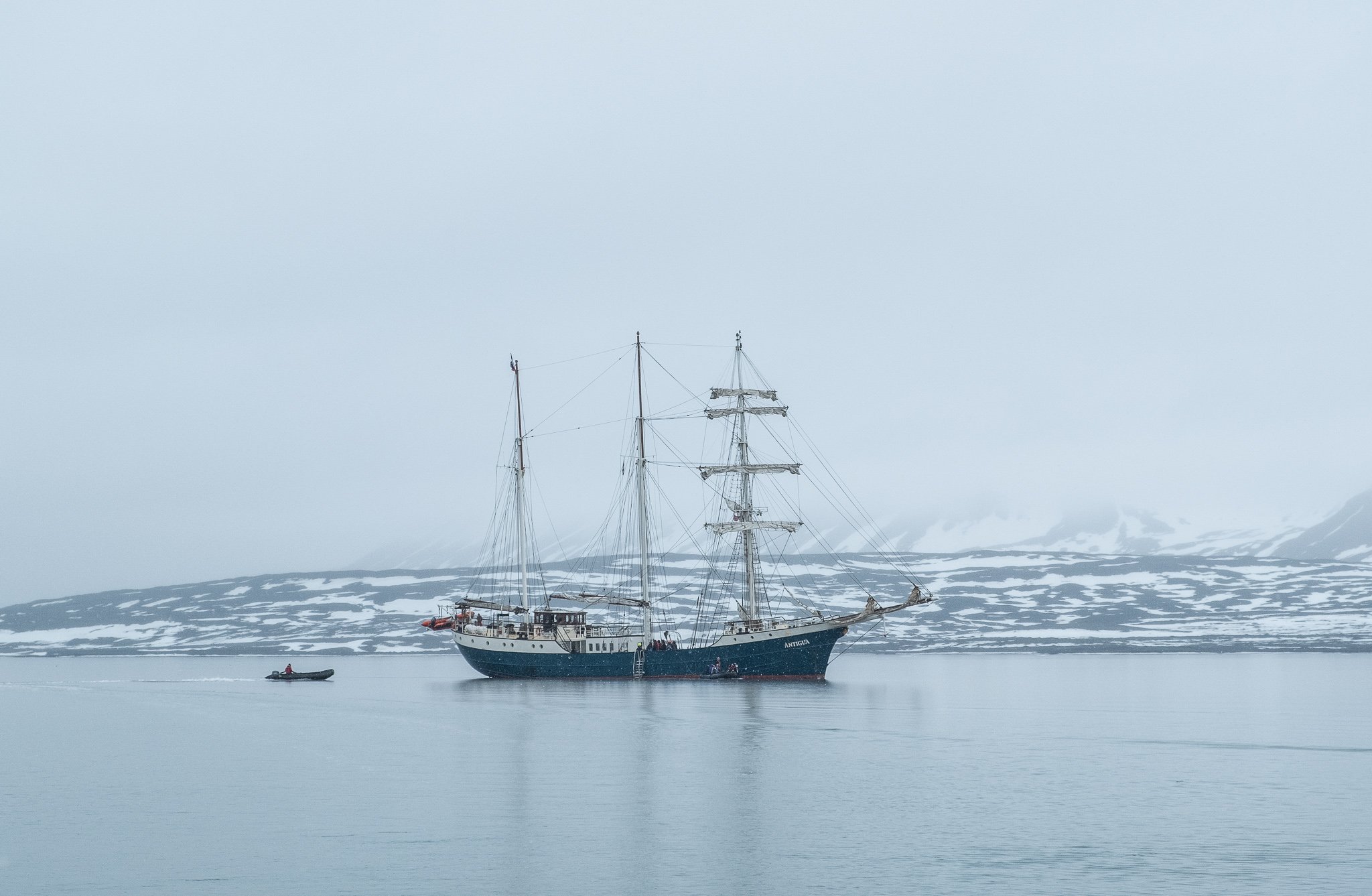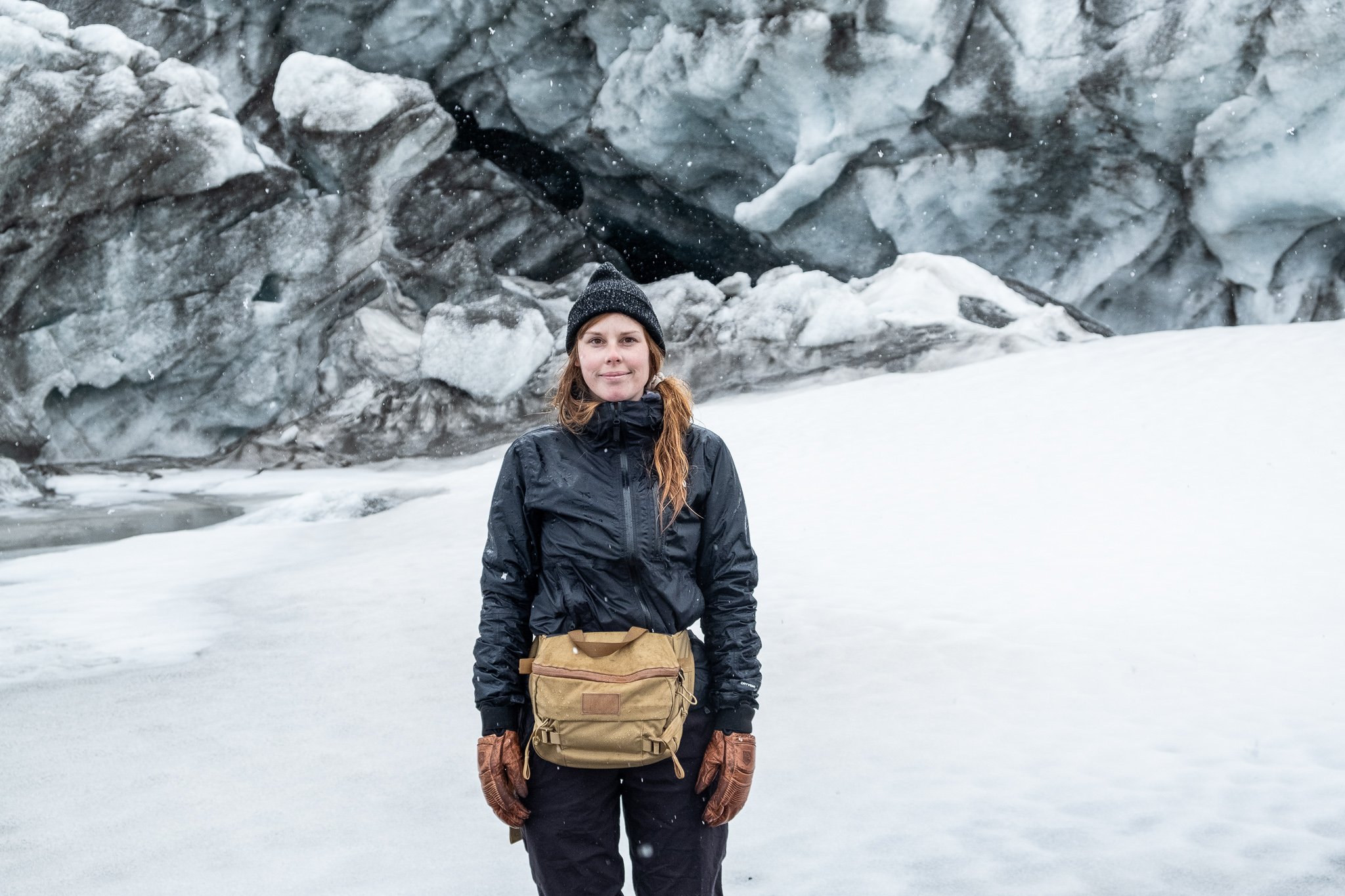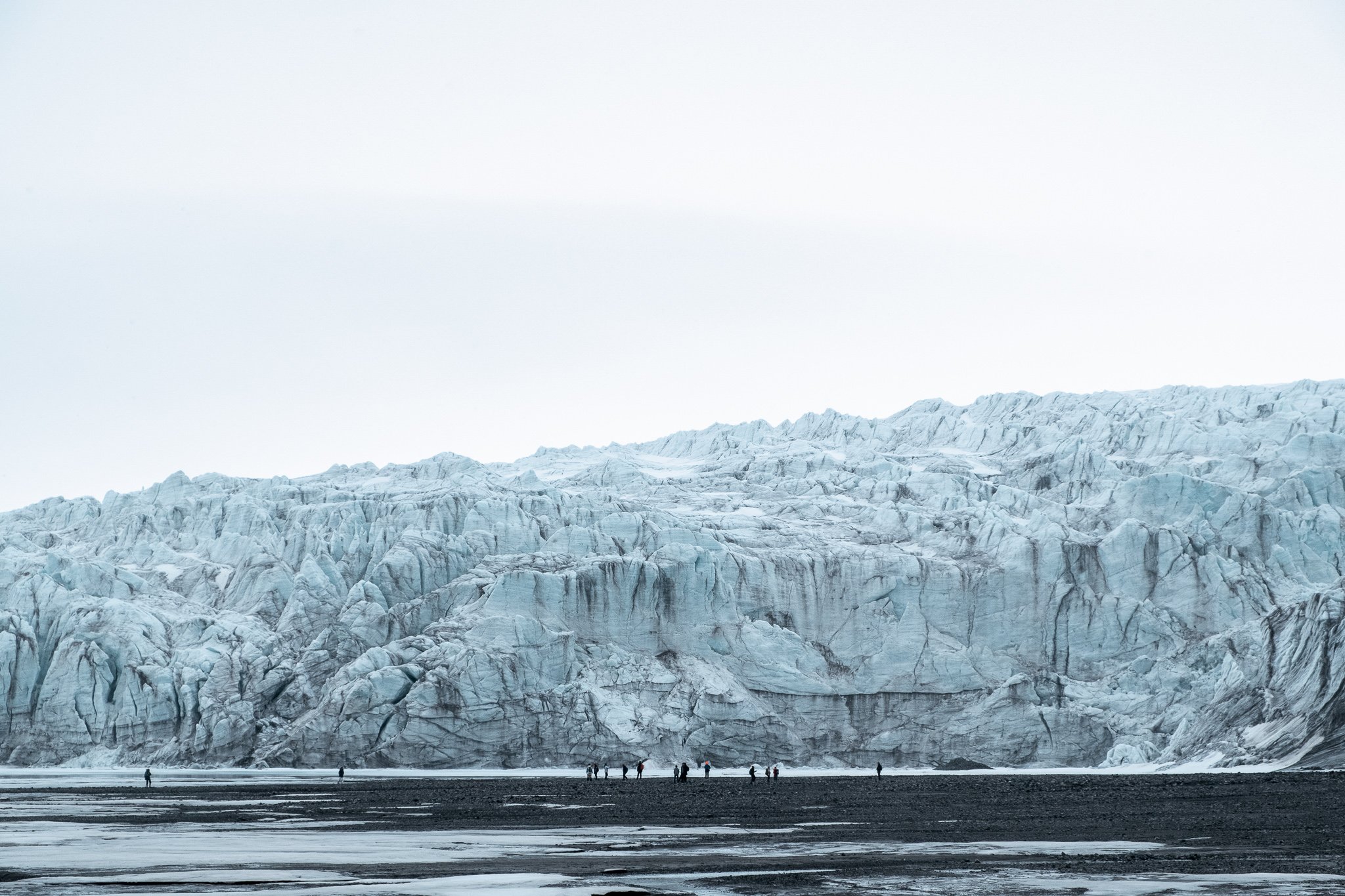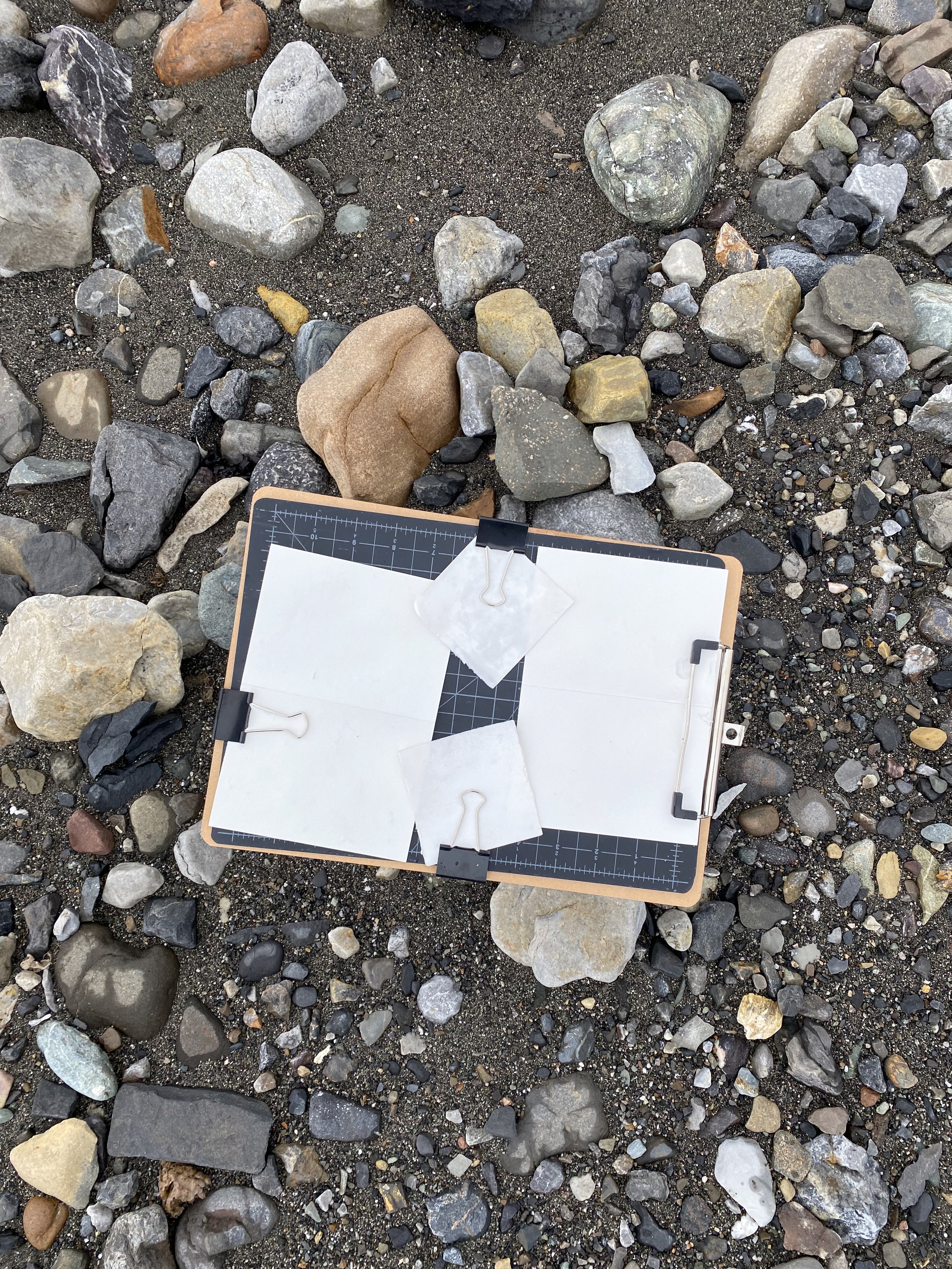‘Step outside and see where you are.’
Those were the first words we heard most mornings from Sarah Gerats, our program lead and top polar bear guide. Sarah is a phenomenal artist, top-notch sailer, inspiring adventurer, and has been leading the Arctic Circle Artist Residency for the last decade.
We set sail aboard the Antigua on June 8th from the harbor in Longyearbyen, Svalbard. We ate, slept, and worked on the ship. My cabin mate, Hillary, is a young German writer living in London. She is working on a fantasy novel set in the Arctic where the trash compiled through the ocean currents begin to have a life of their own. I loved being her roommate and hearing her process her observations of this unique space and experience. There were 28 total residents as well as a 12 person crew which included: a chef, kitchen/bar + cleaning crew, sailors, and 4 polar bear guides. Every single person was inspiring.
Our days, which were always subject to weather, ice, winds, and polar bears (or other exciting surprises), usually looked something like this:
7:00am Breakfast
7:45am Group Meeting + Day Plan
8:30/9am - 1PM Frist Landing
1pm Lunch
2:30-7pm Second Landing
7pm Dinner
8:30pm Third Landing/Presentations/Rest
The course for our two weeks of sailing on the Antigua was not set. It would be determined day by day based on our Captain’s best interpretation of the movement of the ice and direction of wind. Our first landing was in the evening and only a few hours into our first day. We set anchor at Ymerbukta (featured in most of the included photos), an enormous glacier, Esmarkbreen, that stretches over ocean and land. This meant that we could walk up to portions of the glacier and stand beneath it.
It was gray and snowing when we landed. Everyone was eager to begin their work and to document the incredible scenery. We split in two groups with half going into the mountainous region around the glacier, and the rest of us heading directly towards Esmarkbreen. The earth was rocky with black and tan speckles. I was in awe as we walked along the glacier’s receding edge. I had never been so close to one before and I had never seen one like this: swirling with sediment and a river of glacier melt running beneath it.
I set up my impromptu ‘studio’ on two medium sized rocks. I soaked a few sheets of my paper in the snow surrounding the glacier, and used my hands to melt the frozen liquid into the paper. In my sketchbook, I drew three perspectives of what lay before me and did some tests with my watercolors using the Arctic Ocean water.
I quickly learned that scale and distance is nearly impossible to comprehend in this part of the Arctic. Most everything you see is enormous. The mountains make the giant glacier seem small, until comprehension of what is before me catches up with me and I realize it is a third of a mountain. It’s hard to explain how things get closer, then further away and smaller, and then bigger again as you change your perspective. I suppose it is a part of the magic of this very special region.
The snow eventually forced a change of plans. My pens refused to work on my now wet sketchbook paper. For the remainder of our time on this first landing, I sat and soaked up where I was. I would do a lot of this during our landings. Either my fingers would begin to freeze to the point that drawing was no longer possible, or it would be snowing or raining and my pens would stop working, or we would be changing locations too often to set up and get a sketch down. I am really grateful for the moments where I stood, sat, or walked around, and took in where I was with no agenda other than to really be present in it.
Sarah’s daily morning words, ‘Step outside and see where you are’, were especially relevant given that the weather and location may have changed dramatically overnight. Logistically, these changes could dramatically affect each resident’s project for the day.
For me however, these words took root in a much deeper way. By going outside every morning, I found myself slipping into a profound sense of presence and gratitude. I would go as soon as I woke up. I would walk up the stairs from below deck and find my way to the ship’s deck doors. I was usually too sleepy to put on all of my layers, so I emerged from below in my slippers and base layers. I walked the deck and embraced the cold, the wet, the movement of the ship, the sun or the clouds, the melting of glaciers and ice, and the squawking songs of the Gulls and Guillemots.
It is easy to be reverent in a majestic wilderness. Yet, even as I am back in Los Angeles, where the squawking of Arctic Terns and the howls of the Bearded Seals seem to have been replaced by honks and revving motors, there is much to be reverent of. So I am taking her words with me and doing my best to practice seeing where I am, wherever I am.
Check out these super cool companies that partnered with me for this residency!!
I knew that partnerships like this would not only help me fill the gaps in some of my missing gear (winter coat etc) but would also help to amplify the work and the Arctic. The more people that understand the Arctic and our connection to it, the more opportunities there are to create change! Let me introduce you to Askov Finlayson, byHumankind, and Mystery Ranch!
Huge thanks to all three companies for equipping me and for believing in this work! I am so incredibly grateful!









